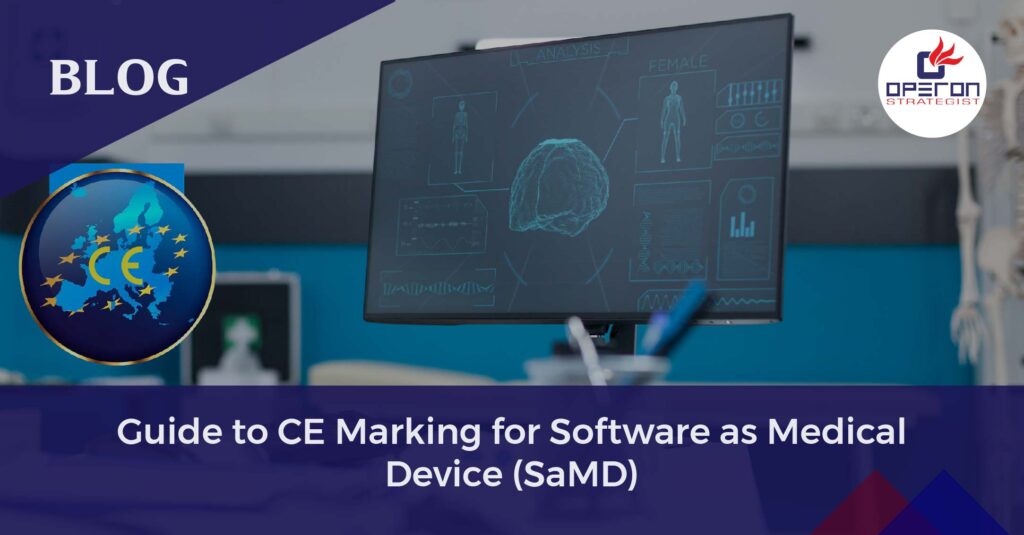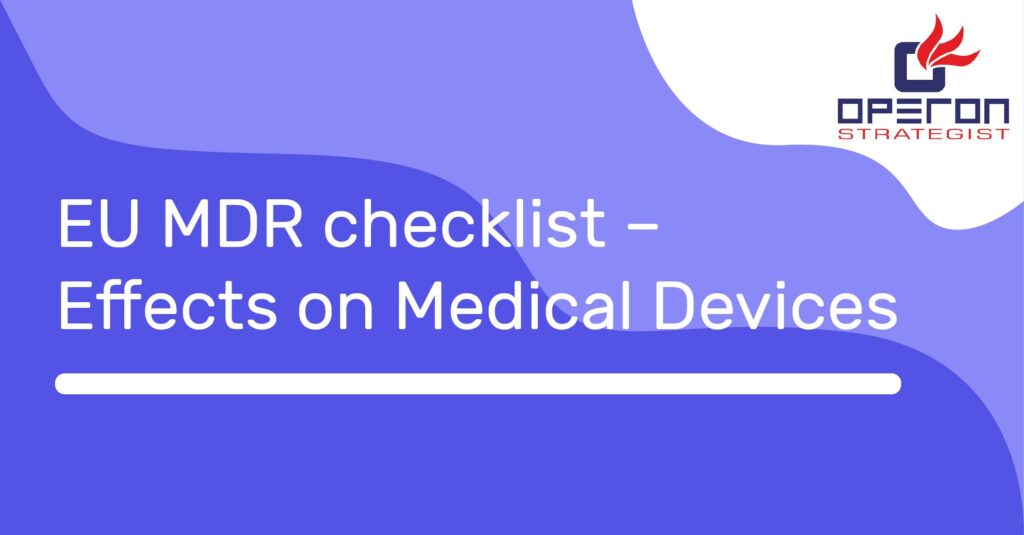Navigating CE Marking for Software as Medical Device:
Software has become a crucial component of medical equipment in the constantly changing field of healthcare. Software is essential to modern medicine, from patient management systems to diagnostic instruments. But with innovation comes regulation, and gaining the CE Marking for medical devices is a crucial part of ensuring the efficiency and safety of medical software.
Operon Strategist is here to help you navigate the complex process of CE Marking for software as a medical device as a CE Marking consultant.
The term Software as a Medical Device is defined by the International Medical Device Regulators Forum (IMDRF) as “software intended to be used for one or more medical purposes that perform these purposes without being part of a hardware medical device.
Looking for SaMD Consultant?
Let’s have a word about your project
Software as a Medical Device (SaMD) and Software in a Medical Device (SiMD) are two different types of software used in the medical field.
Difference Between SaMD and Software Driving Use of Medical Device
SaMD is standalone software that serves as a medical product in and of itself. It is designed to carry out one or more medical functions without being part of a hardware device. For instance, an application on your smartphone that monitors your heart rate and provides health advice based on the data collected would be considered SaMD.
On the other hand, SiMD is software that’s part of a medical product, such as implanted software in medical equipment. This means it’s embedded as part of a hardware medical device and is necessary to drive the intended medical purpose. For example, the software that controls an MRI machine would be considered SiMD.
In summary, if the software operates independently of any hardware medical device, it is classified as SaMD. If it drives or influences the device, it is known as SiMD.
Example of Software as a Medical Device (SaMD)
- An application on your smartphone that monitors your heart rate and provides health advice.
- Computer-Aided Detection (CAD) software that performs image post-processing to help detect breast cancer.
Example of Software in a Medical Device (SiMD)
- Software used to “drive or control” the motors and the pumping of medication in an infusion pump.
- Software used in closed-loop control in an implantable pacemaker.
CE Certification Process for Medical Device Software
The process to secure CE certification for medical device software involves several steps:
- Identify Product Classification and Perform an Assessment: Determine the class of the device. Since the introduction of EU MDR in May 2021, software is now classified as an active medical device. All Medical Device Software that is released to the EU market is required to have CE marking.
- Underpin a Quality Management System (QMS): This is a crucial step in ensuring that your product meets the necessary quality standards.
- Create a Technical File to Fulfil EU MDR Norms: Prepare a technical file that demonstrates compliance with the essential health and safety requirements of the relevant regulations.
- Let the Notified Body Perform an Audit for Conformity Check: For medical devices from classes IIa, IIb, and III, a conformity assessment conducted by a Notified Body is required. A Notified Body is a third-party organization, accredited by a European Competent Authority, that checks compliance with the MDR.
- Obtain Certification: For class I devices, you can self-declare conformity. For class II and III devices, you need to submit required documentation to the Notified Body to obtain certification.
- Register the Product in EUDAMED:T his is a database for medical devices in the European Union.
- Place the Product on the Market: Once you’ve obtained certification and registered your product, you can begin selling it within the EU.
- Post-Market Surveillance: This involves monitoring your product once it’s on the market to ensure continued compliance and safety.
Take Your Journey to CE Marking for SaMD to New Heights.
Classification as per EU MDR
Software as a medical device under EU MDR (Classes I, IIa, IIb, and III) and IVDR (Classes A, B, C, and D) in the same way as all other medical devices. The classification of a device is based on its intended use as well as any inherent risks, just like with other types of devices. The guidance document MDCG 2019-11 discusses the classification of medical devices, including software on page 27. Examples of SaMD classification based on the IMDRF framework are also included in Annex IV.
Unlock CE Marking for Your SaMD With Operon Strategist's Expert Consultation
Embark on a seamless journey to secure CE Marking for your Software as a Medical Device (SaMD) with Operon Strategist, an EU MDR consultant who specializes in navigating the intricate process of regulatory compliance for medical software. From product classification to obtaining certification, we guide you through each step, ensuring efficiency and safety in compliance with EU MDR.
Schedule a consultation today and let Operon be your strategic partner in achieving CE Marking for SaMD. Your success in the dynamic field of healthcare innovation starts here!

-
Operon Strategisthttps://operonstrategist.com/author/snehal/
-
Operon Strategisthttps://operonstrategist.com/author/snehal/
-
Operon Strategisthttps://operonstrategist.com/author/snehal/
-
Operon Strategisthttps://operonstrategist.com/author/snehal/




